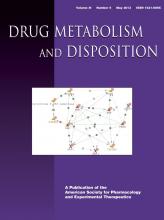Abstract
This cocktail study evaluated the interaction potential of the oral lavender oil preparation silexan with major P450 (cytochrome P450) enzymes. Subjects and Methods: Sixteen healthy male or female Caucasians completed this double-blind, randomized, 2-fold crossover study. Silexan (160 mg) or placebo were administered once daily for 11 days. Additionally, on day 11 of both study periods, 150 mg caffeine (CYP1A2), 125 mg tolbutamide (CYP2C9), 20 mg omeprazole (CYP2C19), 30 mg dextromethorphan-HBr (CYP2D6), and 2 mg midazolam (CYP3A4) were administered orally. Formal interaction was excluded if the 90% confidence interval (CI) for the silexan over placebo ratios for phenotyping metrics (primary: AUC0–t) was within a 0.70–1.43 range. Results: According to the AUC0–t comparisons, silexan had no relevant effect on CYP1A2, 2C9, 2D6, and 3A4 activity. Secondary phenotyping metrics confirmed this result. Mean ratios for all omeprazole-derived metrics were close to unity. The 90% CI for the AUC0–t ratio of omeprazole but not for omeprazole/5-OH-omeprazole plasma ratio 3 hours post-dose or omeprazole/5-OH-omeprazole AUC0–t ratio (secondary CYP2C19 metrics) was above the predefined threshold of 1.43, probably caused by the inherent high variability of omeprazole pharmacokinetics. Silexan and the phenotyping drugs were well tolerated. Repeated silexan (160 mg/day) administration has no clinically relevant inhibitory or inducing effects on the CYP1A2, 2C9, 2C19, 2D6, and 3A4 enzymes in vivo.
Footnotes
- Received November 19, 2012.
- Accepted February 7, 2013.
In adherence to the guidelines of the International Committee of Medical Journal Editors, it is declared that this study is work for hire supported by Dr. Willmar Schwabe GmbH & Co. KG, Karlsruhe, Germany (sponsor). S.K., S.S., and A.D. are employees of Dr. Willmar Schwabe GmbH & Co. K.G. and T.G. received honoraria from Schwabe. No further conflict of interest is to be declared.
- Copyright © 2013 by The American Society for Pharmacology and Experimental Therapeutics
DMD articles become freely available 12 months after publication, and remain freely available for 5 years.Non-open access articles that fall outside this five year window are available only to institutional subscribers and current ASPET members, or through the article purchase feature at the bottom of the page.
|






